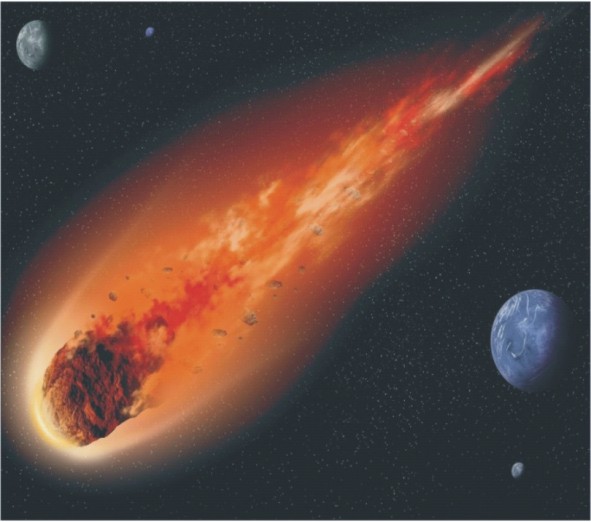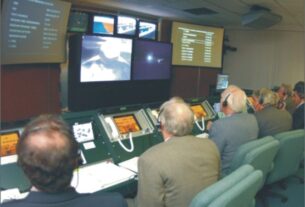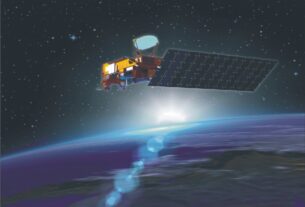By the end of the year India is expected to begin a process of satellite launches that will give it sovereign capability of using space to facilitate navigation and guidance of its military as well civil airborne assets very much as is done currently through the American-owned Global Positioning System (GPS) and the Russian Global Navigation Satellite System (GLONASS) in which India has an exclusive joint partnership with Russia.
However, because the use of both the GPS and the GLONASS facility can be denied by the respective owners at crucial moments of geopolitical developments in the Asian regional context India thinks it is appropriate to have its own spatial navigation system at least in the context of its own sphere of strategic interest covering the northern half of the Indian Ocean littoral and a large chunk of the Tibetan Autonomous Region of China.
To that end the Government decided in 2006 that it would create its own spatial navigation system and by way of competence building set in motion the Indian Regional Navigational Satellite System project with its own array of seven satellites and ground stations created by the Indian Space Research Organization and managed by the Indian Airports Authority of India.
Before that, in what could be said to be a technology demonstrator it undertook the GPS-Aided Geo Augmented Navigation (GAGAN) system which, as the name suggests, is an amplification of the GPS signals for greater accuracy and integrity over what is known as Wide Area Augmentation System to make up for distortions, delays and weakening/ strengthening of satellite signals caused by the ionosphere and the natural Doppler Effect of an object approaching and departing the earth.
The ability to handle this kind of work is a steppingstone for creating and handling the entire constellation of as many as 21 or more satellites for global coverage.
Within the global format there are regional requirements that call for augmentation and that is what India has done through its GAGAN project. Much will depend on the health of the Indian Geosynchronous Space Launch Vehicle. One malfunctioned and crashed into the Bay of Bengal during December 2010 launch.
Dual purpose
All spatial navigation systems are dual use. They can be used to control aviation both civil and military as well as add accuracy to ballistic missiles, cruise missiles and even large calibre gun-howitzers (155 mm of the Bofors type).
In a regional context they enable a wide-area network centricity in the management of surveillance aircraft like Airborne Warning and Command Systems (AWACS) that have the job finding targets and guiding own fighter/bombers to attack (vector); the circular error probable (CEP) of ballistic missiles and cruise missiles can be reduced to a small fraction by midcourse corrections induced by global/regional positioning systems using super-secret command codes specified for military applications.
Thus much of the famed accuracy of the Indo-Russian joint project Brahmos is dependent on the inputs available through GLONASS. The ability of the Prithvi interceptor to track and destroy incoming missiles in the endo-atmosphere (within the atmosphere) is also enabled by mid-course corrections fed into its sensors by spatial positioning systems.
The latest short-range surface-to-surface missile Prahaar with a CEP of less than ten meters is a product of spatial inputs that allows the warhead to land close enough, if not directly on, to target for the explosion of its warhead to destroy it by blast and fragment effect.
Spatial network
While India has managed to secure access to military oriented precision codes from both the US as well as Russia, the ideal will be an indigenous spatial network with homegrown codes and secrecy components that will ensure that there is no foreign intrusion in operations in Indian weapons systems.
As is to be expected military applications tend to take priority and the better quality signals are reserved for military use. Very much as in the Missile Technology Control Regime, the US applies restrictions on the sale of GPS receivers in the civil sector.
Receivers that operate up to altitudes of 18 kilometers and at speeds of up to 515 meters per second are classified as military munitions and banned for export except under strict licensing procedures.
The procedure was known as Selective Availability till President Bill Clinton did away with the distinction by executive order.
President Vladimir Putin opened the way for India to receive military-potential signals from the GLONASS constellation and it was followed up President Dmitry Medvedev during his visit to India in 2010 when the two countries signed a deal to allow India access to high precision signals from GLONASS for military purposes with the avowed intention of improving the accuracy of their ballistic and cruise missiles given that India has several types of Russian weapons in its arsenal.
All spatial positioning systems, be they GPS, GLONASS, the Chinese Compass and the proposed European Galileo also give to civil aviation a cost-benefit factor that is invaluable in this day and age of spiraling fuel prices.
The efficient management of airspace by avoiding the fuel-guzzling “stacking” system by which aircraft are asked to hover over an airport at different levels before being called in to land by air traffic controllers can be enabled by constant updating of positions of each aircraft in the stack as well as the congestion in the parking environment of the airport.
Quick dispersals of aircraft on the ground can be facilitated which in turn enables air traffic controllers to clear the stacks at a faster rate.
More and more, all militaries around the world are finding it extremely beneficial to use GPS transceivers to maintain greater cohesion intra-squad/section right up to Brigade Headquarters in a fast moving combat environment.
In difficult terrain, and there is plenty in India, patrolling at night by troops in any strength is rendered more compact, more flexible and more amenable to reconnaissance-in-strength operations against suddenly encountered enemies as in the jungle terrain of Jammu and Kashmir.
The raid by US Navy SEALs on the Osama bin Laden hideout in Abbottabad in Pakistan has drawn attention to the “tracking” role of the GPS of individuals in a crowded habitat.
It needs to be stated that such tracking is only possible when basic details of the cellphone are known in advance and uploaded into the GPS.
It is only after that that every call made on that cellphone can be tracked by longitude and latitude and the position of the user is transmitted to ground stations for necessary action – either a drone attack or, as in the case of the courier who eventually led the US to the mansion in which Osama lived with his wife and children, through a careful and painstaking tracing of his movements between calls.
All these multifarious functions of spatial navigation systems have created a unique niche for such systems in the life and times of modern-day man.
Space exploration, which took off as a quest to explore the mysteries of the cosmos, paved the way for facilitating communications, earth observation, weather watch, navigation and related sectors through a string of earth orbiting satellites.
And the next emerging dimension of space exploration focuses on the extraction of resources from planetary bodies and asteroids to herald the era of space industrialization.
Indian Space Research Organisation (ISRO), which has already announced plans for sending probes to the asteroid belt as part of its deep space missions, has also hinted at not missing the bus of emerging space industrialization.
With many space faring nations looking at the prospects of mining helium, an environment friendly and abundant source of energy from the lunar entrails, India too has evinced interest in extracting the lunar energy riches.
However, with lunar resources extraction facing many complex technological challenges, the immediate term focus of space industrialization is on asteroids, which are made up of metals and rocky materials and formed during the earliest times of the solar system, around 4.5-billion years ago.
Floating energy
Space exploration, which took off as a quest to explore the mysteries of the cosmos, paved the way for facilitating communications, earth observation, weather watch, navigation and related sectors through a string of earth orbiting satellites.
And the next emerging dimension of space exploration focuses on the extraction of resources from planetary bodies and asteroids to herald the era of space industrialization.
Indian Space Research Organisation (ISRO), which has already announced plans for sending probes to the asteroid belt as part of its deep space missions, has also hinted at not missing the bus of emerging space industrialization.
With many space faring nations looking at the prospects of mining helium, an environment friendly and abundant source of energy from the lunar entrails, India too has evinced interest in extracting the lunar energy riches.
However, with lunar resources extraction facing many complex technological challenges, the immediate term focus of space industrialization is on asteroids, which are made up of metals and rocky materials and formed during the earliest times of the solar system, around 4.5-billion years ago.
Interestingly, asteroids formed much closer to the sun, where it was too warm for ice to remain cold. As it is, earth has been hit by asteroids whose orbit bring them to the inner solar system.
Significantly, near earth asteroids are considered potential candidates for early mining activities. Their location makes them suitable for use in extracting the construction materials of near earth space based facilities, thus greatly reducing the economic cost of transporting supplies to earth orbit.
Asteroid mining
Asteroid mining operations require special equipment to handle extraction and processing of mines in outer space. In 2012, NASA Institute for Advanced Concepts (NIAC) announced the Robotic Asteroid Prospector project which will examine and evaluate the feasibility of asteroid mining in terms of means, methods and systems.
All said and done, there is also a view that the cost of returning asteroidal materials to earth far outweigh their market value and that asteroid mining will not attract appreciable private capital at the current commodity prices and space transportation costs.
Even so, other studies show potent profit for asteroidal mining enterprise with the extensive use of solar power. But then getting solar radiance from solar power satellites (SPS) proves a difficult to realize system at the current level of technological development.
There is no denying the fact that potential market for materials mined from asteroids can be identified and profit generated if extraction cost is brought down by a substantial extent.
But the problem is that very little is known in terms of what exact materials an asteroid is composed of. Even so, the materials that could be mined from an asteroid could include iron, nickel, titanium and platinum.
With the spectre of vital resources and key elements like antimony, zinc, tin, silver, lead, irdium, gold and copper on earth getting exhausted at a rapid pace, man has now set his sight on asteroids for sustaining the supply of these vital materials.
It has been suggested that platinum, cobalt and other valuable elements from asteroids may be mined and sent back to earth for profit, used to build solar power satellite and space habitats and water processed from asteroidal ice to refuel orbiting propellant depots.
NASA is currently developing an asteroid probe named OSIRIS-Rex. Planned for launch in 2016, it will cost about US$1 billion and return between 60 gms and 2 kg of asteroid material to earth by 2023.
Deep Space Industries (DSI), a space industrial enterprise launched early this year, is working towards making asteroid mining a reality. DSI, a privately owned space exploration enterprise based in US plans to launch two 25 kg space probes named Firefly in 2015.
“The Fire Flies are reconnaissance spacecraft; they fly by targets and take close up pictures during their passes,” says David Gump, Chief Executive Officer (CEO) of DSI.
As a follow up to Firefly, the company plans to launch a larger spacecraft named Dragon Fly in 2016 which would be specially designed to collect between 30-60 kg of asteroidal material to earth.
Earlier, Japan was able to bring back a few grains of asteroid material to study but there has been no substantial quantity to analyse as yet. Some asteroids are high in water, methane and other hydro carbons while other asteroids are high in nickel and iron. The start up DSI has announced plans to begin prospecting and mining near earth asteroids by 2020.
Yet another high profile enterprise launched last year with the backing of celebrities -including filmmaker James Cameron and Google co founder Larey Page – is all poised to announce plans to mine near earth asteroids.
Clearly, Planetary Resources Inc intends to sell these materials and generate a healthy profit for itself. As envisaged now, Planetary Resources Inc plans to create a fuel depot in space by 2020 by using water from asteroids, water could be broken down in space to liquid oxygen and liquid.
The company wants to start by launching orbiting telescopes that would identify suitable asteroid targets for mineral exploration and exploitation.
Some scientists struggle to see how cost effective asteroid mining could be even with the high value of gold and platinum. They point out that to return just 60 kg of material from an asteroid will cost US one billion.
Technical and legal issues
Even as the technical challenges in mining asteroids continues to be a major area of concern, there is a question about the legality of a company effectively claiming an asteroid for itself.
For the 1967 Outer Space Treaty appears to make asteroid mining a difficult proposition based on the clause that outer space is not subject to national appropriation by claim of sovereignty or by means of use or occupation or by any other means.
Development of an asteroid orbit manipulation infrastructure could offer irresistible return on investment.
But some leading space scientists have expressed concern that asteroid orbit engineering technology meant to alter the trajectories of asteroids in nearby interplanetary space could cause catastrophic collision with earth.
A manned mission to asteroid is one of the long term goals. The near earth asteroids are the target of such a mission due to their proximity to earth. A manned mission to an asteroid would be a new step in the history of space flight.
For setting up human colonies on the moon, the biggest challenge is sustaining the supply of building materials. Carrying them all the way from the earth would be a highly inefficient proposition.
As such asteroids will be used a source for the supply of materials. Early evidence suggests that there are trillions of dollars worth of minerals and metals buried in the depths of asteroid that come close to the earth.
Asteroids are so close that many scientists think an asteroid mining is easily feasible. As many as 580,000 asteroids in our solar system have been catalogued.
However, DSI lacks the deep pockets needed to reach for the asteroids and mine minerals. “It needs serious, deep pockets, execution backing the vision and far more than Power Point design and pretty pictures to realize this fantastic future of abundance for the human race” said Bob Richards, co-founder and CEO of Moon Express.
They say the resources of deep space are vast enough to support a bustling, new industry off earth’s surface.
The “propellant depot” in outer space would allow satellites and journeying spacecraft to tip up their tanks cost efficiently. Such off earth depots could extend the lives of satellites and make manned trips to far flung destinations like Mars much economically viable exercise.
The metals and materials extracted from asteroids could be used for the construction of habitats, solar power satellites and other spacecraft, planetary jump starts and in space manufacturing industry.
Precious metals such as platinum and gold could also be delivered to earth. So far astronomers have identified more than 9,000 near earth asteroids with about 1,000 being added to the rolls every year.
Advocates of asteroid mining hope it could turn it into a trillion dollar business but some scientists are highly sceptical of the idea.
Some asteroids are thought to harbour water ice which could be used as a raw material for the manufacture for rocket propellant or even breathable air. More than 900 new asteroids that pass near the earth are discovered every year.
They can be like the Iron Range of Minnesota was for the Detroit car industry last century-a key resource located near where it was needed. In this case, metals and fuel from asteroids can expand the in-space industries of this century.
Most asteroids have small and extremely tiny magnetic field which makes the task of mining smoother and easier. Another advantage is that the asteroidal metals and minerals are concentrated in a small, easily accessible space and are much purer in content.
Near earth asteroids are generally defined as that population of asteroids which spends at least a part of each orbit between 0.983 and 1.3 Astronomical units from sun.
These asteroids are primarily a part of the main belt population or were once active comets. Some near earth asteroids contain platinum group metals in much higher concentration than the richest mines on the earth.
In space, a single platinum rich 500-metre wide asteroid contains about 174 times the yearly world output of platinum and 1.5-times the known world reserve of platinum group metals. This amount is enough to fill a basket ball court.
By 2025, NASA hopes to land Orion astronauts on an asteroid to fulfil President Barack Obama’s goal of making manned spaceflight beyond the moon to asteroids followed by the flight to Red Planet.
The success of asteroid mining would herald a new era of industrial revolution based on advanced robotics and rockets to reach, mine and return tens of billions of dollars worth of critical rare materials. Mining equipment companies already see an opportunity in this new emerging area.





